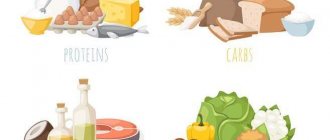Those who want to lose weight or solve health problems think that they have found a way out - fractional meals for weight loss, create a menu for the month and begin to follow it blindly. Only 30% of people conduct full examinations of their body before weight loss activities in order to identify its capabilities and select suitable nutrition programs. The chosen food restrictions will not affect some, but others may develop serious diseases - not only chronic, but also acquired. Is it worth playing roulette or is it better to work on yourself in the company of a nutritionist? Let’s find out in the article.
We eat fractionally - how and why
The usual diet contains a maximum of 3 parts - breakfast, lunch and dinner. In the realities of a fast pace of life, their number is reduced to 1-2, but the amount eaten at one time increases significantly. In the morning, a person who wants to lose weight, but is hungry, pounces on food and comes to his senses when everything that was on the table has already been consumed. But the food is digested and by nightfall you want to eat again, so you have to look in the refrigerator and eat before going to bed.
Switching to a different lifestyle means eating 6-8 times a day in minimal portions. In addition, you will not have time to feel hungry, because the interval between meals will be only 2-2.5 hours. The desire to fill your stomach will not have time to form, so not much will be eaten.
The fractional meal menu for each day must be compiled correctly, preferably according to the recommendations of a specialist. In the morning you need to eat carbohydrates, and in the evening - preferably only light proteins.
Our additional services: Bioimpedance | Marutaka Massage | Pressotherapy | Ion-Detox
Nutritionist's comment:
This approach to eating helps you lose excess weight, speeds up your metabolism and increases your calorie expenditure throughout the day. The basis is the thermogenic effect - when we eat more often, we spend the consumed calories on processing and assimilation of food. If you take frequent portions of energy, much more energy will be spent on their absorption. But it is important to control your condition and be aware of possible disorders in the body due to severe changes. Sometimes, without supervision, a person’s functions of certain organs are inhibited, metabolism or the functioning of the body is disrupted. It is necessary to change the regimen scheme in time or abandon it.
Contraindications and side effects
By adhering to fractional nutrition, the rules of which are not overly strict, you can not be afraid of the development of side effects. Moreover, doctors recommend this diet for those who suffer from gastrointestinal pathologies and diabetes. However, in case of diseases of the pancreas, you should be careful, because in this case the food must be quite high in calories.
To avoid possible problems, it is advisable to consult a doctor before starting a diet. It is also important to monitor your condition and observe how your stomach perceives the new diet.
With the help of fractional nutrition, you can get rid of excess weight without making significant efforts. The main thing is to stick to the scheme you developed. The only difficulty may be the impossibility of combining snacks with your work schedule. However, this problem can be solved by accustoming yourself to carrying ready-made food packaged in small trays. This small inconvenience will be offset by significant advantages - a slim figure and excellent health.
Features of fractional meals
If someone sits down to have a snack 2 times a day, then the period of fasting is on average up to 8 hours, and there is often no breakfast at all. If the regime is not followed, a strong feeling of hunger appears, it is difficult to suppress it immediately, so more food is absorbed than necessary. A system in which the required amount of food is divided into 6-8 times is beneficial in many respects. You will have to eat in small portions, ideally smaller than your own fist, but this will be enough, because in 2-2.5 hours there will be another snack.
There are 3 ways to stick to this diet:
- look in the refrigerator every time you feel slightly hungry;
- eat well 5-6 times in small portions;
- Have light snacks every 2-3 hours.
In the first case, you need to eat very little, just to satisfy the feeling an apple is enough and after 15 minutes a banana. This method has a lot of disadvantages: it is difficult to create a menu, eating becomes chaotic, and the desire to eat normally becomes obsessive. For some who used this approach, the day turned into constant chewing. The gastrointestinal tract is overloaded, the entire system malfunctions.
If you divide the total amount of daily food by equal 5-6 times, then the benefits will be much greater. It is only important not to allow a gap more serious than 4 periods of fasting between snacks. This method allows you to receive a regular amount of necessary calories and microelements, and also avoids overeating. Gradually the stomach decreases in size.
The third method consists of 8-10 equal servings with similar calorie content. The size of what you eat at a time does not exceed a glass. Hunger almost never comes, the percentage of fat decreases, as part of the diet, fractional meals are a varied menu for the week.

Advantages of the method
It has been repeatedly proven that fractional meals with the right diet and a competent approach contribute to rapid weight loss. Thus, you can get rid of several tens of extra pounds.
This type of diet is long-term, that is, the result will be noticeable in a month or more, in contrast to fast diets, in which you can lose 5-10 kilograms in a week. The simple secret is that when you return to a normal diet, the weight will return and so will the fat, but with fractional amounts, the figure remains slim and toned.
This method prevents you from starving, overeating and becoming exhausted. That is, the body receives all the necessary vitamins and minerals that are necessary for life processes and metabolism.
In order to achieve the desired result and not harm your health, it is important to observe what foods you should not eat, as they can take a long time to digest. It is better to give preference to quickly digesting foods - seeds, nuts, berries, fruits, vegetables (except potatoes).
Let's consider the main advantages of fractional nutrition:
- improves digestion;
- allows you to cleanse the intestines of toxins;
- normalizes the functioning of the gastrointestinal tract;
- restores microflora, neutralizes dysbacteriosis;
- allows you to get rid of extra pounds.
For these benefits to work, it is important to follow your diet and routine. It is also additionally important to sleep at least 8 hours a day and engage in at least some physical activity.
What is the essence of the technique?
When a person eats in small portions, he does not have time to form the desire to empty the refrigerator, he is saturated with small portions. Gradually, the daily calorie intake decreases to 1200-1600 kcal; when the norm is met, the stomach becomes several times smaller. This approach eliminates the possibility of gaining weight.
It is necessary to strictly control the ratio of microelements, carbohydrates, fats and proteins.
Nutritionist's comment:
Switching to a similar style of food consumption really allows you to lose about 10 kg in six months. But it is important to be observed by a specialist who will monitor the process and monitor health indicators. If you experience nausea, vomiting, cramps or pain in the gastrointestinal tract, changes in blood pressure or sugar levels, strange discharge or bleeding, this is a reason to urgently consult a doctor.
Basic Rules:
- After waking up, you need to drink a glass of water 20-30 minutes before breakfast. This will prepare the gastrointestinal tract for productive work and strengthen metabolism.
- Remove harmful products. It is better not to buy or prepare baked goods, sweet, spicy, fried and fatty foods, give up fast food and chips with crackers.
- You can’t go hungry, otherwise there can be no question of any beneficial effect.
- A little trick - place plates on the table that are smaller than usual in size.
- Control the BZHU consumed.
- Every 2 weeks you need to adjust the plan, tracking results and changes.
- Light workouts or yoga will speed up weight loss and add tone to your life.
It is important to control BJU for a balanced diet in the following ratios: 25% proteins, 30% fats and 45% carbohydrates - this is the most optimal and rational formula for a healthy diet.
Permitted and prohibited products
When eating fractional meals, it is necessary to give up harmful and high-calorie foods. These include:
- alcohol;
- pastries, desserts, confectionery and bakery products, sugar;
- carbonated drinks;
- foods (including cereals, vegetables) high in starch;
- pasta;
- semi-finished products, fast food, canned food;
- fatty, fried, spicy, smoked, pickled, overly salted.
Permitted ones include:
- grain crops – oatmeal, buckwheat, pearl barley;
- low-fat dairy products;
- lean meat - chicken, turkey, beef, rabbit;
- lean fish and seafood;
- vegetables and herbs;
- fruits and berries;
- whole grain bread;
- protein shakes, freshly squeezed juices, coffee, tea (with lemon, cinnamon, milk, ginger, but without sugar).
Sweets allowed include marshmallows, marmalade, dark chocolate, dried fruits, honey, molasses, and oatmeal cookies. The use of sweeteners is allowed.
Why do they lose so much weight?
The main reason is the absence of strong hunger, which forces you to consume more than the body needs. Frequent snacking on healthy foods satisfies such urges, and you no longer want to look at the refrigerator.
In addition, in a properly planned menu, the daily calorie intake is significantly lower than with a normal daily routine. A person does not even notice that he is eating half of his usual amount. The stomach becomes several times smaller, so the feeling of fullness comes faster.
It is necessary to combine this approach with observation by a specialist and physical exercise, so the process will go much faster and without harm to those who want to lose weight.

What you can and cannot eat
Prohibited foods are known to almost everyone who has ever watched their figure. These are sweets of any kind (except dried fruits and honey), baked goods, including pasta. You should not eat fast food and frozen semi-finished products, as well as:
- mayonnaise;
- soda, especially sweet;
- any canned food.
Organizing fractional meals for weight loss for a week involves a lot of cooking, and you will have to set aside time in your schedule for this. You can cook once for all 7 days, but, of course, it is better to make fresh portions every few days, and ideally for each meal.
Such innovations allow you not only to be physically satiated, but also to deceive the brain psychologically. Those who have problems with extra pounds often develop an obsessive habit of looking into the refrigerator or chewing something. This approach helps to simultaneously indulge the desire to repeat familiar actions and prevents you from gaining weight.
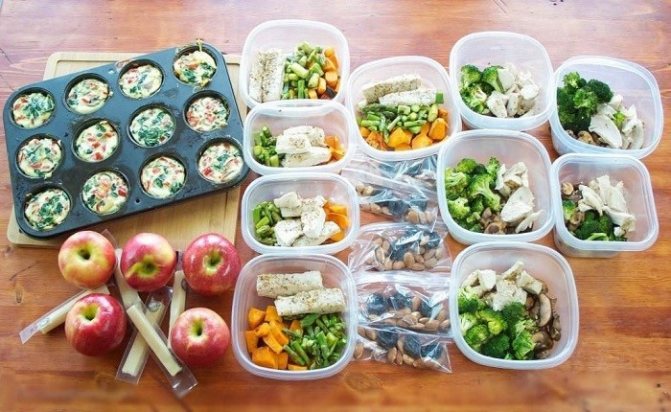
Contraindications for the diet
Any diet may have contraindications, and fractional diets are no exception.
Let's consider who needs to be careful with this method of losing weight:
- with gastrointestinal pathologies, especially with problems with the pancreas, low-calorie foods should not be consumed in large quantities;
- If you have diabetes, you need to eat well, although you can divide the diet into 5-6 times;
- with renal and liver failure.
Even if you eat regular food in small portions, there will still be a weight loss effect, so if you have diseases, you can eat this way, just eat fattier foods. This method of eating may not be suitable for everyone, so you need to monitor your health.
As a precaution, it is recommended to check all blood parameters (hemoglobin, cholesterol, red blood cells, platelets, etc.). Tests must be taken before starting fractional feeding, and then a few weeks later. This will allow you to track the effect of diet on the body.
Fractional meals - weekly menu for weight loss: table
Organization will be simpler and easier to accomplish if prepared and dosed snacks are immediately placed in containers.
It is correct to cook in a double boiler, slow cooker, oven or non-stick frying pan. Each of these methods avoids adding oil. The best among them for dressing and cooking are olive or flaxseed.
It is advisable to sit down at the table at the same time every time. This way, the body will get used to it faster, and it will be easier to create a meal schedule. You can download the application and set notifications for it at the desired time.
Examples and table of fractional meals for the week:
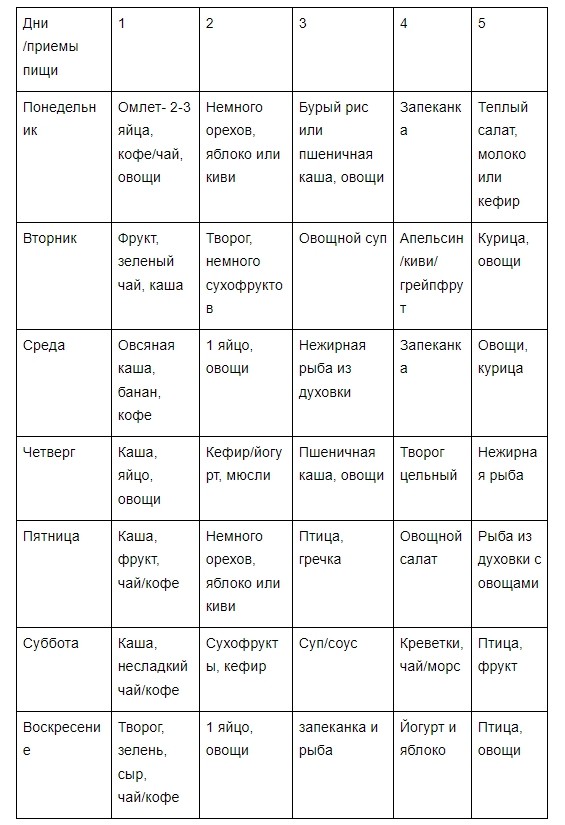
Such fractional meals include recipes for a 7-day menu; no complex cooking or marinating steps are required. You don't need weird or hard-to-find items—just items that you can actually buy at the grocery store in any season.
The presented table is only approximate; all components from it can be swapped according to days of the week or meals, arranged and replaced. It is only important to count BJU per day and not consume difficult-to-digest carbohydrates at night.
Cooking according to pre-calculated and written data, if you make it yourself, is much easier.
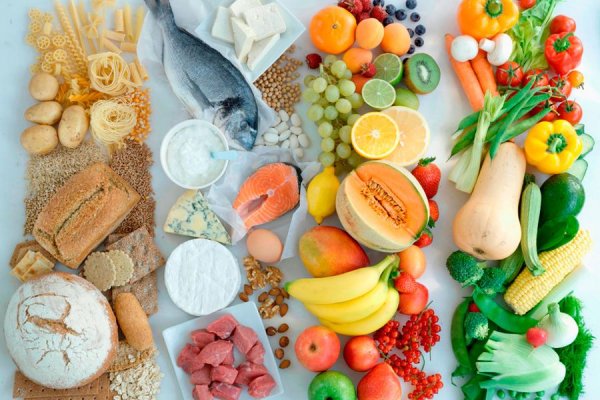
Fractional meal menu for weight loss for a month
When making plans for 30 days, you need to consider the number of calories, carbohydrates, fats and proteins in each of them. Here you need to remember the main rule - even if you have no appetite, it’s still worth eating.
Every day - 2 hot dishes, the rest can be cold at the discretion of the compiler. It’s better if at least one of them is soup or sauce; you can’t do without them all the time.
For snacks you can take:
- vegetable salads;
- cottage cheese;
- natural yogurt;
- unsweetened fruit plates;
- light soup with vegetable broth.
It is permissible to eat less than the norm, but no more. If you miss the time, you do not need to eat a double portion at a time. Be sure to drink 30 mg of water per kilogram of live weight per day.
Nutritionist's comment:
You cannot take nuts, sweets or coffee for a snack. The first contains too many calories, the second will quickly cause hunger, and the third will cause gastritis or stomach ulcers. Any change in diet should be under the supervision of a doctor to prevent the development of serious diseases. It is important to monitor the body’s indicators - sugar, blood pressure, even temperature can rise significantly against the backdrop of dramatic changes.
Advantages and disadvantages of this choice
A positive result is guaranteed if you follow all the rules. But this diet, like any other, has tangible pros and cons.
Among the advantages:
- you can smoothly and accurately reduce the amount of food you eat, without severe hunger and stress;
- insulin levels are normalized, but diabetics definitely need to consult a doctor;
- small portions balance metabolism and relieve gastrointestinal congestion;
- prevents nutrient imbalances;
- there is just enough food to fill you up, but there is no feeling of lethargy - it’s easy to get back into the working rut.
Flaws:
- You should not start switching to it without supervision from a specialist;
- difficulties of addiction for people who are emotionally dependent on food intake;
- in some professions it is difficult to combine multiple snacks with work;
- Carrying several containers with you is not very convenient.
Before you begin the transition, you need to think about how it will be implemented.
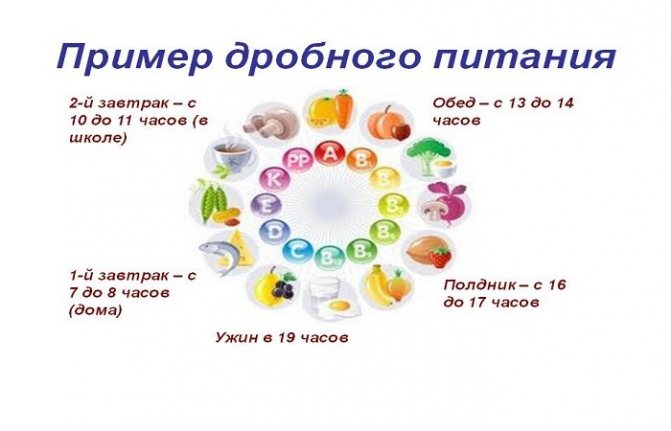
Disadvantages of a fractional diet
In addition to a number of advantages, a fractional diet may have some disadvantages that you need to familiarize yourself with before switching to this type of nutrition:
- This method is not suitable for people addicted to food. They do not know the norm and constantly consume large amounts of food.
- With multiple meals, there is a possibility of eating even more than usual. If you reduce portions, then dependent people may experience psychological disorders due to malnutrition;
- Due to snacking, nutrition is not balanced;
- Inconvenient food can be considered a disadvantage. For example, you always need to be on alert so as not to miss a meal. This is not very convenient for people working at posts, in offices and other places where there is no opportunity to constantly have a snack.
Now almost everyone has smartphones and tablets on which you can set a timer or program to remind you of meals.

